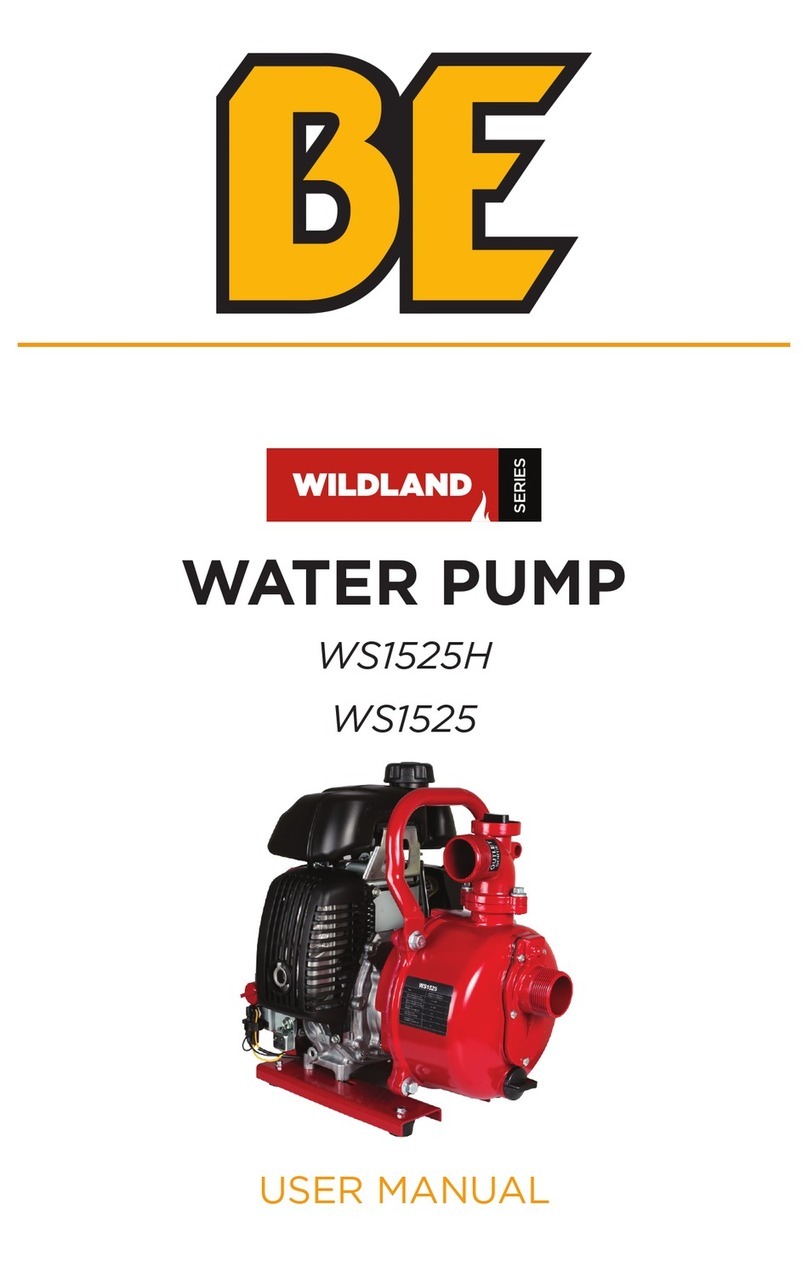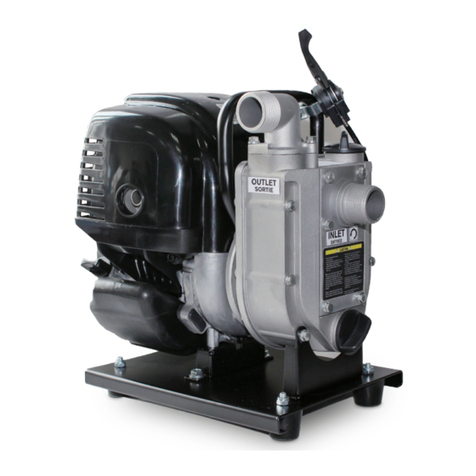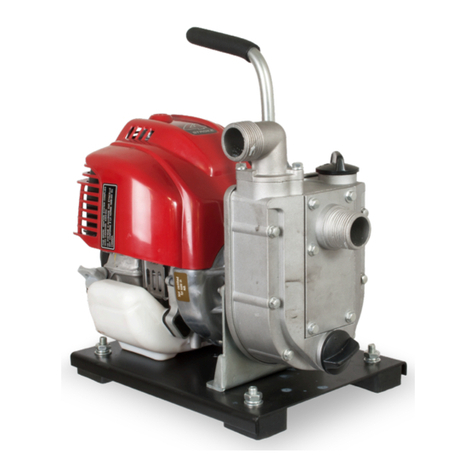
9
OPERATING INSTRUCTIONS
7. Operating Tips
• Dry-running operation causes increased wear and should be avoided at
all costs. This means that the unit must be switched o if water ceases
to ow at any point.
• The pump is automatically switched o upon overheating by the built-in
thermal motor protector. After having cooled down, the motor
automatically switches on again. For more information, see Trouble
Shooting Guide, point 10.
• When unplugging the unit, pull from the shell, not the cord.
• The power cable (1) must not be used for mounting or relocating the
pump for submerging or lifting/securing the pump. Fix a rope to the
carrying handle (2).
• After pumping chlorinated swimming pool water or other liquids that can
leave residue, the pump should be rinsed with clear water.
• Sand and other abrasive material in the liquid cause increased wear,
reducing the output of the pump over time.
• Avoid running of the pump for more than 10 mins against closed
delivery side of the pump.
• The Submersible Pumps drains up to a residual water height
of approx. 0.2”(5mm). This at suction height is only reached during
manual operation (see point 5,“Operation”), but not during automatic
operation.
• The Submersible Pump is equipped with an automatic deaerating
device whose function is to remove probable air pockets in the pump.
If the water level drops below the vent valve (4), some water ows
penetrates outside through the vent valve. This is not a defect of your
pump, but rather serves to deaerate the pump.
• In the event of manual operation, the pump has sucked o completely
and water ows again after the pump operation, the pump isn’t deaer-
ated automatically. Then, the pump has to be switched o for a short
time and then switched on again.
8. Maintenance, Care and Storage.
Submersible pumps are virtually maintenance free. That being said, it is
important to ensure that they are not used for anything other than their
intended application. Misuse can permanently damage the pump.
In case of contamination inside the pump, the suction base (6) can be
taken o by unscrewing the 3 Phillips recessed head screws (8).
This the turbine space can be cleaned. For safety reasons, a damaged
turbine (9) can only be exchanged by the Service Center.
To protect the pump from frost damage, store the pump in a dry place.
































